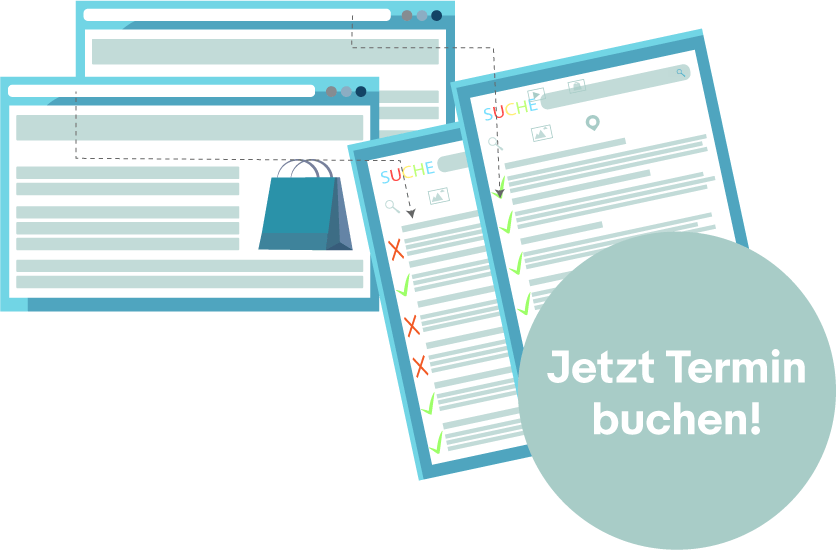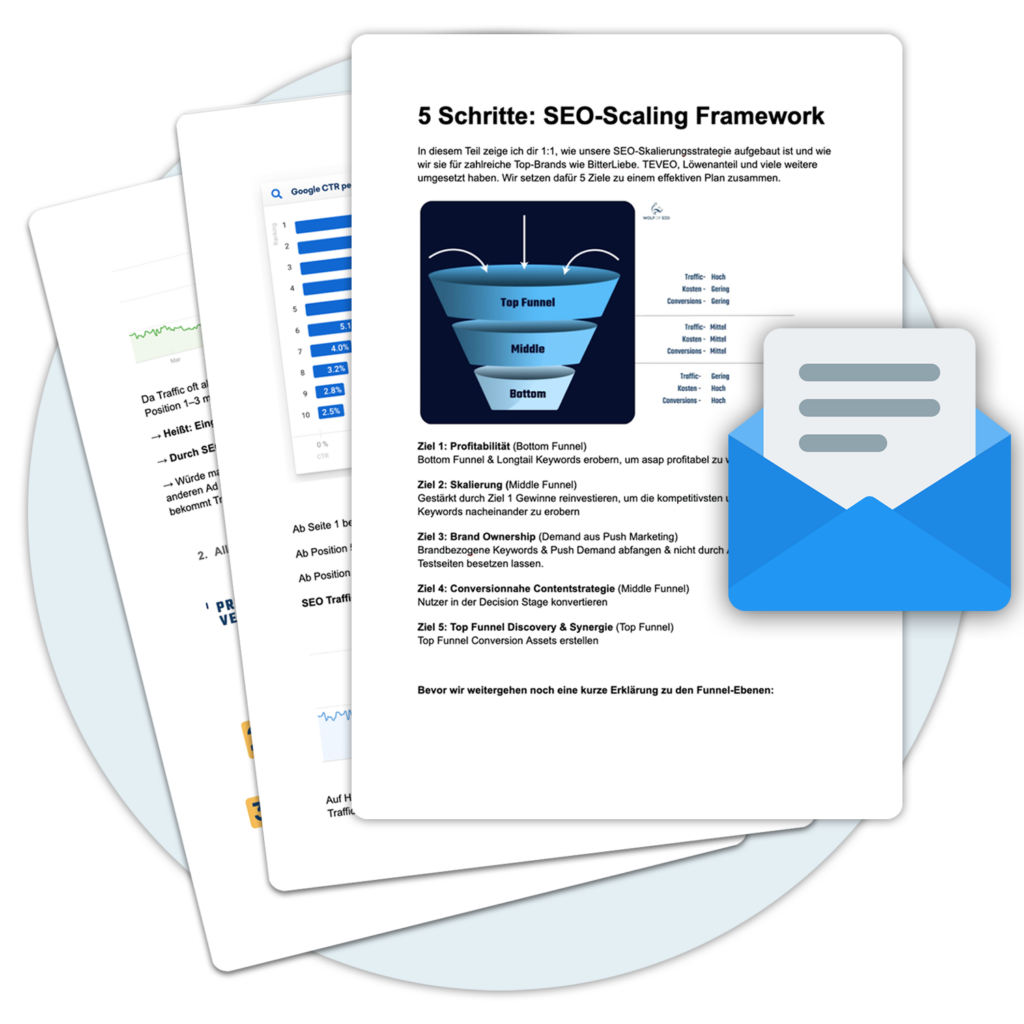What is accessibility on the Internet
Accessibility on the Internet refers to the practice of designing web content in such a way that it can be used by all people without restriction, regardless of their physical, mental or technical limitations. This concept is fundamental to ensuring that the internet functions as a universal medium that is inclusive and accessible to everyone. Accessibility on the Internet includes a variety of measures and techniques to ensure that websites and mobile applications are designed in such a way that users with various disabilities - including visual, hearing, mobility and cognitive impairments - are able to use these services effectively and comfortably.
The legal obligation for accessibility
In various regions of the world, including the European Union, legal provisions have come into force which Accessibility on the Internet are intended to promote accessibility. These regulations include the EU Web Accessibility Directive and the Barrier-free Information Technology Ordinance (BITV) in Germanywhich define the requirements for public sector bodies regarding the accessibility of their web offerings. These regulations are designed to ensure that public services are widely accessible online and help to close the digital divide.
Principles and implementation
The implementation of the Accessibility on the Internet is based on the four basic principles of the Web Content Accessibility Guidelines (WCAG): Perceivability, Usability, Understandability and Robustness. These guidelines provide a framework for the creation of web content that ensures that it can be used by as many people as possible. They include requirements such as the provision of text alternatives for non-textual content, the use of sufficient contrast for text and graphic elements and ensuring that websites are fully operable via the keyboard.
To support the Accessibility various assistive technologies are also used, including screen readers, which enable blind or visually impaired users to hear text content, and screen magnifiers, which are intended for users with impaired vision. In addition, technologies such as subtitling and sign language interpretation are used to provide access to multimedia content for people with hearing impairments.
The consideration of the Accessibility in the design process of a website or mobile application is not only a question of legal compliance, but also a question of social responsibility and economic benefit. By making web offerings accessible to a broader user base, companies and organizations expand their audience while improving the user experience for all visitors to their website.
Basic principles and legal framework for accessibility on the Internet
The implementation of the Accessibility on the Internet is supported by a combination of international standards, national laws and guidelines. These regulations define how digital services must be designed to be accessible to people with different disabilities. They reflect the growing awareness and responsibility to make the digital world more inclusive.
International standards for accessibility
A central pillar of the Accessibility on the Internet are the Web Content Accessibility Guidelines (WCAG). These guidelines, developed by the World Wide Web Consortium (W3C), serve as internationally recognized guidelines for the creation of accessible web content. WCAG 2.0 and its subsequent versions define how online content can be made more perceptible, operable and understandable for people with disabilities.
Legal framework in the European Union
In the European Union, the importance of digital Accessibility through the EU Web Accessibility Directive underlined. This directive obliges public sector bodies to make their websites and mobile applications accessible to all users. In addition, compliance with these requirements is ensured through regular monitoring and reporting to the European Commission, which reinforces the commitment and dedication to Accessibility in the digital space.
National legislation and implementation
In Germany forms the Accessibility Reinforcement Act (BFSG) together with the Barrier-free Information Technology Ordinance (BITV) the legal basis that ensures the accessibility of websites for people with disabilities. These laws and regulations reflect the requirements of the EU directive at national level and specify what operators of websites and mobile apps must observe in order to ensure digital accessibility for people with disabilities. Accessibility to ensure that
The legal requirements and international standards for Accessibility on the Internet should not only be seen as an obligation, but also as an opportunity. They illustrate how important inclusive access to information and communication is for a democratic and fair society. They also give website operators the opportunity to make their services accessible to a wider audience and counteract social exclusion.
The role of WCAG 2.0 and other international standards
The Web Content Accessibility Guidelines (WCAG) 2.0 and its continuations are an indispensable part of international efforts to make the Internet accessible to everyone. These guidelines, published by the World Wide Web Consortium (W3C), provide a detailed framework for how web content can be designed so that it can be used by people with a wide range of disabilities. The importance of WCAG extends far beyond the borders of individual countries and has contributed significantly to the global standardization of accessibility efforts.
Basic principles of the WCAG
The WCAG are based on four basic principles that are intended to ensure that web offers perceptible, operable, understandable and robust sind. Diese Prinzipien dienen als Orientierung für Web-Entwickler und -Designer, um Websites zu schaffen, die flexibel auf die Bedürfnisse und Vorlieben verschiedener Nutzergruppen reagieren können. Sie decken ein breites Spektrum von Empfehlungen ab, von der Bereitstellung von Alternativtexten für nicht-textuelle Inhalte bis hin zur Gewährleistung der Kompatibilität mit assistiven Technologien.
Influence and implementation in legislation
The Range of the WCAG is not limited to the recommendation level; rather, they have been incorporated into national legislation in many countries, where they form the legal basis for digitalization. Accessibility. Numerous countries have integrated WCAG 2.0 or its successor versions into their corresponding regulations. In the European Union, for example, the guidelines are an integral part of the EU Web Accessibility Directive, which obliges public bodies to make their digital offerings accessible in accordance with these standards. The global acceptance and implementation of the WCAG underlines its status as an internationally recognized standard for web accessibility. Accessibility on the Internet.
Further international standards
In addition to the WCAG, there are other international standards and initiatives dedicated to promoting digital literacy. Accessibility to this. Examples of this are the Initiatives of the International Telecommunication Union (ITU)which focus on the accessibility of telecommunications services, and the Guiding principles of universal designwhich take a broader approach to the design of products and environments to make them accessible to all users. These and other initiatives complement the WCAG by addressing specific aspects of digital accessibility. Accessibility and raise awareness of the importance of an inclusive approach to technology development.
Taken together, the WCAG and related international standards provide a solid foundation for global efforts to create an accessible internet. They guide developers, decision-makers and stakeholders to incorporate accessibility issues into the planning and development of digital offerings from the outset, contributing to a more inclusive digital future.
Techniques and tools to promote digital accessibility
To improve the digital Accessibility provides a range of techniques and tools that can be used by both web developers and users. These tools and methods are designed to overcome barriers on the internet and thus create a more inclusive digital environment.
Assistive technologies
Assistive technologies play a crucial role in enabling access to digital content for people with disabilities. These technologies include, among others:
- Screen reader: Software that enables blind or visually impaired users to perceive text content acoustically by converting digital text into speech.
- Screen magnifiers: Programs that enlarge areas of the screen to make access easier for people with impaired vision.
- Voice input systems: Enable computers to be controlled and text to be entered using spoken commands, which is an advantage for users with motor impairments.
Adaptable design
Adaptive or responsive design ensures that web content can be properly displayed and used on a variety of devices, from computers to smartphones. This design principle supports the Accessibilityby ensuring that content is accessible regardless of the screen size or device used. The implementation includes:
- Flexible layouts that adapt to different screen sizes
- Text sizes and contrasts that can be adjusted for better readability
- Navigation aids that are also easy to use on touchscreens
Improve perceptibility and comprehensibility
Various techniques can be used to improve the perceptibility and comprehensibility of web content:
- Alternative texts for images: Provide descriptions for visual content so that screen readers can read this information aloud.
- Subtitles and transcriptions: Make audio and video content accessible for hearing-impaired users.
- Comprehensible language: The use of simple and clear language helps all users, especially those with cognitive impairments, to understand content better.
The implementation of these techniques and tools is an ongoing process that not only aims to comply with standards, but also to improve the user experience for all. By combining assistive technologies and adaptive design with intentional content creation, web developers and designers can create an inclusive digital environment that is accessible to people with a wide range of abilities and needs.
Barriers on the Internet and their impact on users
The internet has become a central part of everyday life, offering countless opportunities for information, education, communication and entertainment. However, not everyone has easy access to these digital resources. Certain barriers on the internet can make access difficult or even prevent it - with far-reaching consequences for the users concerned.
Visual impairments and the visual design of websites
For people with visual impairments, visual barriers such as insufficient contrast between text and background, the use of illegible fonts or the lack of alternative text descriptions for images can make accessing information considerably more difficult. Such design elements often make it impossible for blind and visually impaired users to navigate the web independently and benefit from digital offerings.
Barriers for people with hearing impairments
Audio content without subtitles or sign language videos is a major barrier for people with hearing impairments. The inaccessibility of auditory information means that this group of users is excluded from important educational, news and entertainment offerings. Without the appropriate adaptations, videos, podcasts and other audio material cannot be used by them.
Mobility restrictions and the usability of the Internet
Mobility impairments that affect fine motor skills and the use of input devices such as a mouse or keyboard can also present barriers on the internet. If websites are designed in such a way that they can only be navigated with the mouse or have small, closely spaced buttons, users with motor impairments are deprived of their independence online. The lack of keyboard navigation and unclear interaction patterns severely restrict their ability to explore the internet and use services independently.
Cognitive limitations and the complexity of the content
People with cognitive impairments face challenges when they are confronted with complex websites, incomprehensible technical jargon or a lack of structure in the information provided. Such barriers not only lead to frustration, but also to exclusion from educational and participatory opportunities on the internet.
The effects of these barriers go far beyond simple inconvenience. For people with disabilities, they often mean exclusion from essential social, informational and economic activities. This significantly limits their ability to participate in social life. Overcoming these barriers through the conscious design and development of web services is therefore not only a question of accessibility, but also of social inclusion and equality.
Costs and benefits of implementing accessible websites
The implementation of Accessibility on websites is associated with costs, but also offers significant benefits for both users and website operators. While the initial costs may be perceived as an obstacle for some, the long-term benefits outweigh the investment.
Initial costs for implementation
The costs for the analysis and implementation of accessible websites vary depending on the extent of the existing barriers, the complexity and the age of the website. A basic review and adaptation can cost between 600 and 1,200 euros, depending on these factors. These costs include the application of tests, the adaptation of the design, the optimization of content for screen readers, the creation of alternative texts for images and possible training for the relevant personnel.
Long-term advantages and benefits
Beyond the initial costs, the implementation of Accessibility on websites has numerous advantages. On the one hand, website operators reach a wider audience, including people with disabilities, which has a direct impact on access to information, products and services. On the other hand, accessible websites improve the user experience for all visitors, regardless of their individual needs or limitations. This can lead to increased customer satisfaction, longer time spent on the website and ultimately a higher conversion rate.
In addition, websites benefit from a better ranking in search engine results, as search engines such as Google rate websites with high accessibility positively. This improves the visibility of the website and can lead to an increase in organic traffic. Furthermore, compliance with legal guidelines and standards contributes to the Accessibility helps to avoid legal risks and possible sanctions that could result from non-compliance.
Ultimately, the implementation of accessible websites not only leads to an ethically responsible presence in the digital space, but also to increased brand awareness. Companies and organizations that value inclusion and Accessibility strengthen their image and promote a positive corporate culture that emphasizes diversity and equality.
In summary, the initial investment in the Accessibility may be considerable, but the resulting benefits, both financial and reputational, manifest the importance and benefits of these efforts. The long-term focus on inclusive accessibility contributes to a fairer digital world and provides equal participation opportunities for all users.
Examples of the implementation of accessible websites
The implementation of accessible websites is essential to ensure that all users, regardless of their physical or cognitive abilities, have access to digital information and services. In practice, this means using various methods and technologies to improve accessibility. Here are some illustrative examples of how Accessibility can be successfully realized on websites.
High-contrast design and customizable text sizes
A basic example of accessible web design is the implementation of a high-contrast mode that makes text stand out more clearly against the background. In addition, pages that allow users to adjust text sizes without loss of page display offer significant added value for people with visual impairments. Such adjustments can be easily achieved through CSS styles and make content accessible to a wider user group.
Navigation and usability
Ensuring that a website can be navigated using only the keyboard is another important step towards Accessibility. This is of particular benefit to users who are unable to use a mouse due to a motor impairment. The logical structuring of HTML documents with the correct use of heading tags (H1, H2, H3 etc.) is also essential in order to convey a meaningful sequence of content to screen reader users. Clear and consistent navigation helps all users to find their way around the website.
Alternative texts and multimedia adaptations
The provision of alternative texts for images and graphics is another essential technique for creating Accessibility. These descriptions enable screen reader users to understand the content of the images, which is particularly important when images carry essential information. In addition, subtitles and audio descriptions in videos support people with hearing impairments in accessing multimedia content.
Input assistance systems and form validations that provide feedback in real time support users with cognitive impairments and improve the completion of web forms for all user groups. Implementations like these not only increase accessibility, but also the overall user-friendliness of the website.
The successful implementation of accessible websites shows that an inclusive Internet is possible through conscious design and the use of specific web development practices. These examples illustrate that the focus on Accessibility is not only a legal obligation, but also an opportunity to Range and significantly expand the benefits of digital offerings. An inclusive approach to web development promotes a society in which everyone can use information and services on the internet on an equal footing.
Monitoring and certification of accessibility on the Internet
The guarantee of the Accessibility on the Internet is a continuous process that requires regular monitoring and adjustments where necessary. This includes compliance with legal standards and guidelines to create an inclusive user experience for people with disabilities. The process of monitoring and certification plays a crucial role in ensuring the Accessibility on websites and mobile applications.
Periodic monitoring of web accessibility
Periodic monitoring is an essential component of maintaining the Accessibility on the Internet. It involves the regular review of websites and mobile applications using specialized tools and manual testing to ensure that they comply with current guidelines and standards, such as the Web Content Accessibility Guidelines (WCAG). Through this ongoing monitoring, accessibility issues can be identified and resolved before they become a barrier for users.
Certification and compliance reports
Websites and mobile applications can undergo certification to confirm compliance with accessibility standards. This certification is awarded by accredited organizations and underlines an organization's or company's commitment to digital inclusion. Compliance reports, which are created after the review, document in detail the level of Accessibility and offer concrete recommendations for improvements. These reports are not only useful for internal purposes, but can also serve as proof of compliance with legal requirements.
Role of the supervisory authorities
In many countries, special supervisory authorities are responsible for monitoring compliance with accessibility regulations. These authorities carry out regular audits to ensure that public bodies and companies that meet certain criteria make their digital offerings accessible. In addition to carrying out audits, the tasks of the supervisory authorities also include advising website operators on the implementation of accessibility measures. They are also authorized to impose sanctions in the event of non-compliance with the regulations.
The monitoring and certification of the Accessibility on the Internet not only promote compliance with legal requirements, but also make a significant contribution to improving the user experience for people with disabilities. By using standardized protocols and guidelines, web developers and designers can create an accessible internet that is equally open to all users. In this way, digital inclusion is understood and implemented not just as a legal obligation, but as a core value in the digital age.
« Back to Glossary Index






